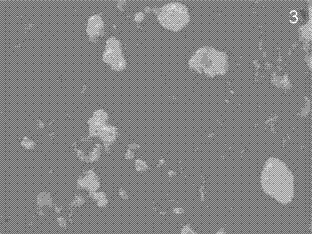Biodegradable material containing ladder-like polysilsesquioxane and preparation method of biodegradable material
A technology for polysilsesquioxane and biodegradable materials, which is applied in the field of biodegradable materials containing ladder polysilsesquioxane and its preparation, can solve the problems of no application of biodegradable materials, etc. Biodegradability, effect of improving heat resistance
- Summary
- Abstract
- Description
- Claims
- Application Information
AI Technical Summary
Problems solved by technology
Method used
Image
Examples
Embodiment 1
[0025] To a clean 100 ml three-neck flask under nitrogen protection, add 20 g (4 mmol) of methyl ladder polysilsesquioxane with a molecular weight of 5000, and add 10 g of toluene, 6.4812 g (16 mmol) of stannous octoate, in After reacting at 80 °C for 30 min, 73.05 g (640 mmol) of caprolactone was added, polymerized at 80 °C for 4 h, the reaction was terminated with 50 g of methanol containing 5 wt% hydrochloric acid, and the product was washed three times with 150 g of methanol, and After vacuum drying for 24 h, 82.1 g of biodegradable material 1 containing trapezoidal polysilsesquioxane was obtained.
[0026] The thermal decomposition temperature of 5 wt% biodegradable material 1 containing trapezoidal polysilsesquioxane was 262 ℃ under the protection of nitrogen.
Embodiment 2
[0028] Add 20 g (0.4 mmol) of phenyl ladder polysilsesquioxane with a molecular weight of 50,000, 80 g of xylene, and 0.64812 g (1.6 mmol) of stannous octoate to a clean 1000 ml three-necked flask under nitrogen protection. , after reacting at 140 °C for 90 min, 73.05 g (640 mmol) of caprolactone was added, polymerized at 140 °C for 0.5 h, the reaction was terminated with 50 g of methanol containing 5 wt% hydrochloric acid, and the product was washed three times with 150 g of methanol , and vacuum-dried for 24 h to obtain 66.35 g of biodegradable material 2 containing trapezoidal polysilsesquioxane.
[0029] The thermal decomposition temperature of 5 wt% biodegradable material 2 containing trapezoidal polysilsesquioxane was 268 ℃ under the protection of nitrogen.
[0030] Degradation of the polymer: The product obtained in this example was degraded with porcine insulin in a buffer solution with a pH of 7 at 37°C, and the results were as follows:
[0031] Optical microscope ma...
Embodiment 3
[0034] To a clean 1000 ml three-neck flask under argon protection, add 20 g (2 mmol) of phenyl ladder polysilsesquioxane with a molecular weight of 10,000, and add 60 g of toluene, 160 ml (16 mmol, the concentration is 0.1 mol / L, the solvent is toluene) n-butyllithium, after reacting at 100 °C for 60 min, add 230.6 g (1.6 mol) lactide, polymerize at 100 °C for 12 h, add 500 g methanol containing 5 wt% hydrochloric acid The reaction was terminated, and the product was washed three times with 1500 g of methanol, and dried in vacuum for 24 h to obtain 143.8 g of biodegradable material 3 containing trapezoidal polysilsesquioxane.
[0035] The thermal decomposition temperature of 5 wt% biodegradable material 3 containing trapezoidal polysilsesquioxane was 264 ℃ under the protection of nitrogen.
PUM
 Login to View More
Login to View More Abstract
Description
Claims
Application Information
 Login to View More
Login to View More - R&D
- Intellectual Property
- Life Sciences
- Materials
- Tech Scout
- Unparalleled Data Quality
- Higher Quality Content
- 60% Fewer Hallucinations
Browse by: Latest US Patents, China's latest patents, Technical Efficacy Thesaurus, Application Domain, Technology Topic, Popular Technical Reports.
© 2025 PatSnap. All rights reserved.Legal|Privacy policy|Modern Slavery Act Transparency Statement|Sitemap|About US| Contact US: help@patsnap.com



